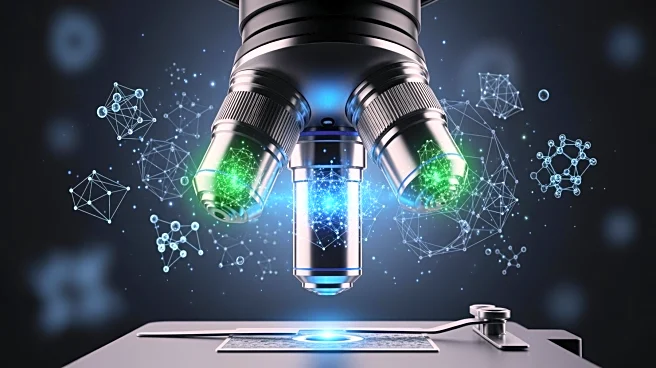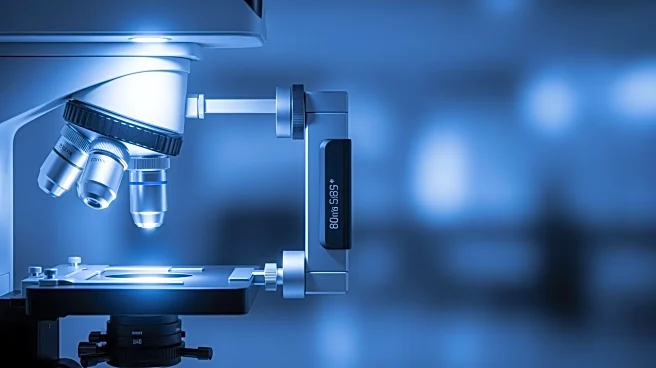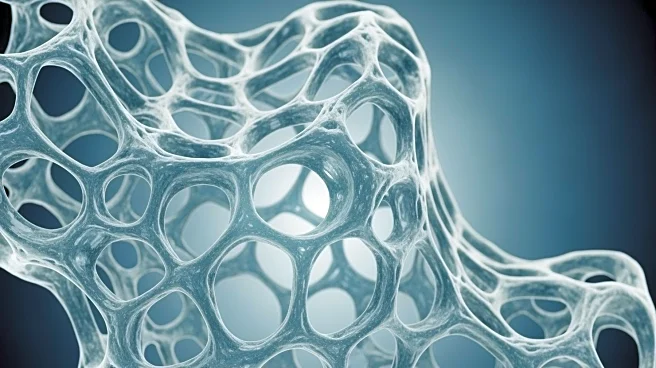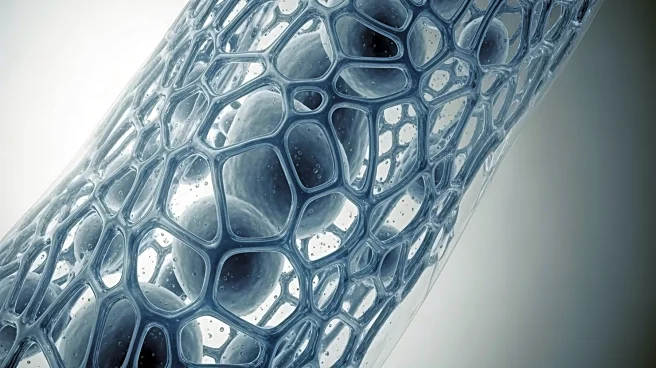What's Happening?
The University of Tokyo has developed a groundbreaking microscope that allows researchers to observe both micro- and nanoscale activities within living cells simultaneously. This dual-light microscope combines
quantitative phase microscopy and interferometric scattering microscopy, enabling detailed visualization of cellular structures and tiny particles without the need for dyes. The technology offers a broader intensity range than standard instruments, preserving cell integrity during long-term imaging. This innovation could significantly enhance pharmaceutical and biotechnology research by providing comprehensive insights into cellular behavior.
Why It's Important?
The ability to observe cellular processes at both micro and nano levels in real-time is a major advancement in biological research. This technology could lead to more accurate drug testing and quality control in pharmaceuticals, potentially accelerating the development of new treatments. By eliminating the need for dyes, the microscope reduces the risk of altering cell behavior, ensuring more reliable data. The integration of two advanced imaging techniques represents a significant leap forward in microscopy, offering researchers a powerful tool for studying complex biological systems.
What's Next?
The research team plans to further refine the microscope's capabilities, aiming to image particles as small as viruses. This could open new avenues for studying viral infections and developing antiviral strategies. The technology may also be adapted for other applications in biotechnology and medical research, potentially leading to new discoveries in cell biology and disease mechanisms.
Beyond the Headlines
The development of this microscope highlights the importance of interdisciplinary collaboration in scientific innovation. By combining different imaging techniques, researchers have created a tool that could transform our understanding of cellular processes. This approach may inspire similar advancements in other fields, encouraging the integration of diverse technologies to solve complex scientific challenges.











